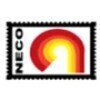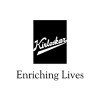


i
Rashmi
Metaliks
Work with us
![]()
Filter interviews by
Rashmi Metaliks Graduate Engineer Trainee (Get) Interview Questions and Answers
8 Interview questions
Alloying elements are used in steel making to improve properties like strength, hardness, corrosion resistance, and machinability.
Alloying elements are added to steel to enhance specific properties such as strength, hardness, toughness, and corrosion resistance.
Common alloying elements include chromium, nickel, manganese, molybdenum, and vanadium.
Chromium is added to improve corrosion resistance, nickel for toughn...
Ceramic is a non-metallic material made from clay, while steel is a metallic material primarily made from iron and carbon.
Ceramic is non-metallic, while steel is metallic
Ceramic is made from clay, while steel is primarily made from iron and carbon
Ceramic is typically more brittle than steel
Steel is stronger and more durable than ceramic
Ceramic is often used for decorative purposes or in high-temperature applicatio...
TTT diagram is a Time-Temperature-Transformation diagram used in materials science to understand the transformation of phases in a material.
TTT diagram shows the relationship between temperature, time, and phases in a material during cooling or heating.
It helps in predicting the microstructure and properties of a material based on its cooling rate.
TTT diagrams are commonly used in heat treatment processes for meta...
Pig iron is an intermediate product of the iron industry, made by smelting iron ore in a blast furnace.
Pig iron is typically around 92-94% iron, with varying amounts of carbon, silicon, manganese, sulfur, and phosphorus.
It is brittle and not suitable for use in its raw form, but can be further processed into wrought iron or steel.
The carbon content of pig iron gives it a high carbon equivalent, making it ideal for...
Lever rule is a principle used in material science to determine the relative amounts of two phases in a two-phase system.
Lever rule is used to calculate the fraction of each phase in a two-phase system based on the weight or volume percentages of the phases.
It is commonly used in metallurgy, ceramics, and other material science fields.
The lever rule equation is: L = (C - A) / (B - A), where L is the fraction of on...
SN curve is a graphical representation of the relationship between stress and fatigue life of a material.
SN curve shows the number of cycles to failure (N) against the applied stress (S).
It helps in determining the fatigue life of a material under different stress levels.
Materials with higher fatigue strength have a steeper slope on the SN curve.
SN curves are commonly used in engineering to predict the durability ...
Fatigue is the weakening of a material due to repeated loading, while creep is the gradual deformation of a material under constant stress.
Fatigue is the process of progressive and localized structural damage that occurs when a material is subjected to cyclic loading.
Creep is the time-dependent deformation of a material under constant load or stress.
Fatigue failure is often characterized by crack initiation and pr...
Different types of steel making include basic oxygen furnace, electric arc furnace, and open hearth furnace.
Basic Oxygen Furnace (BOF) - uses oxygen to reduce the carbon content in the steel
Electric Arc Furnace (EAF) - uses electricity to melt scrap steel and produce new steel
Open Hearth Furnace - uses a fuel-air mixture to heat the steel and remove impurities
Other methods include Bessemer process, direct reduced ...
Rashmi Metaliks Graduate Engineer Trainee (Get) Interview Experiences
3 interviews found
I applied via Campus Placement
(8 Questions)
- Q1. What is TTT DIAGRAM and its use
- Ans.
TTT diagram is a Time-Temperature-Transformation diagram used in materials science to understand the transformation of phases in a material.
TTT diagram shows the relationship between temperature, time, and phases in a material during cooling or heating.
It helps in predicting the microstructure and properties of a material based on its cooling rate.
TTT diagrams are commonly used in heat treatment processes for metals li...
- Q2. What is difference between ceramic and steel
- Ans.
Ceramic is a non-metallic material made from clay, while steel is a metallic material primarily made from iron and carbon.
Ceramic is non-metallic, while steel is metallic
Ceramic is made from clay, while steel is primarily made from iron and carbon
Ceramic is typically more brittle than steel
Steel is stronger and more durable than ceramic
Ceramic is often used for decorative purposes or in high-temperature applications, w...
- Q3. What is fatigue and what is creep in materials
- Ans.
Fatigue is the weakening of a material due to repeated loading, while creep is the gradual deformation of a material under constant stress.
Fatigue is the process of progressive and localized structural damage that occurs when a material is subjected to cyclic loading.
Creep is the time-dependent deformation of a material under constant load or stress.
Fatigue failure is often characterized by crack initiation and propaga...
- Q4. What are the different types of Steel making
- Ans.
Different types of steel making include basic oxygen furnace, electric arc furnace, and open hearth furnace.
Basic Oxygen Furnace (BOF) - uses oxygen to reduce the carbon content in the steel
Electric Arc Furnace (EAF) - uses electricity to melt scrap steel and produce new steel
Open Hearth Furnace - uses a fuel-air mixture to heat the steel and remove impurities
Other methods include Bessemer process, direct reduced iron,...
- Q5. Why do we use alloying elements during Steel making and what are their applications
- Ans.
Alloying elements are used in steel making to improve properties like strength, hardness, corrosion resistance, and machinability.
Alloying elements are added to steel to enhance specific properties such as strength, hardness, toughness, and corrosion resistance.
Common alloying elements include chromium, nickel, manganese, molybdenum, and vanadium.
Chromium is added to improve corrosion resistance, nickel for toughness, ...
- Q6. What is SN curve ?
- Ans.
SN curve is a graphical representation of the relationship between stress and fatigue life of a material.
SN curve shows the number of cycles to failure (N) against the applied stress (S).
It helps in determining the fatigue life of a material under different stress levels.
Materials with higher fatigue strength have a steeper slope on the SN curve.
SN curves are commonly used in engineering to predict the durability of ma...
- Q7. What is the composition of pigiron
- Ans.
Pig iron is an intermediate product of the iron industry, made by smelting iron ore in a blast furnace.
Pig iron is typically around 92-94% iron, with varying amounts of carbon, silicon, manganese, sulfur, and phosphorus.
It is brittle and not suitable for use in its raw form, but can be further processed into wrought iron or steel.
The carbon content of pig iron gives it a high carbon equivalent, making it ideal for cast...
- Q8. What is lever rule?
- Ans.
Lever rule is a principle used in material science to determine the relative amounts of two phases in a two-phase system.
Lever rule is used to calculate the fraction of each phase in a two-phase system based on the weight or volume percentages of the phases.
It is commonly used in metallurgy, ceramics, and other material science fields.
The lever rule equation is: L = (C - A) / (B - A), where L is the fraction of one pha...
Interview Preparation Tips
- Steel making
- Iron making
- Physical metallurgy
Graduate Engineer Trainee (Get) Interview Questions & Answers
posted on 12 Aug 2023

Normal practice from indiabix and maintain time management
(1 Question)
- Q1. Proper core and own prospect
I applied via Referral and was interviewed before Apr 2021. There were 3 interview rounds.

There have 20 basic question regarding Mechanical Engineering
(3 Questions)
- Q1. First ask the introduce yourself
- Q2. Ask some question from Thermodynamics and strength of material
- Q3. Ask some question from my training and project
Interview Preparation Tips
The HR team are very franck and all are very helpful.
Top trending discussions






Interview questions from similar companies

Graduate Engineer Trainee (Get) Interview Questions & Answers
MSP Steel & Powerposted on 22 Jan 2020
I applied via Campus Placement and was interviewed in Jul 2019. There were 4 interview rounds.
Interview Questionnaire
2 Questions
- Q1. About different types of bearings.Details of cenrifugal pump and a bit of vibration.
- Q2. And rest of your personal informatio.
Interview Preparation Tips

Graduate Engineer Trainee (Get) Interview Questions & Answers
Jayaswal Neco Industriesposted on 6 Nov 2021
I applied via Monster and was interviewed before Nov 2020. There were 4 interview rounds.
Interview Questionnaire
1 Question
- Q1. Normal technical questions in written,followed by GD and PI
Interview Preparation Tips

Graduate Engineer Trainee (Get) Interview Questions & Answers
SHYAM METALICS AND ENERGYposted on 30 Sep 2021
I applied via Company Website and was interviewed in Aug 2021. There were 4 interview rounds.
Interview Questionnaire
1 Question
- Q1. Basic Questions in B.tech syllabus like a Electrical machine, Switch gear & protection etc, power Electronics.
Interview Preparation Tips

Graduate Engineer Trainee (Get) Interview Questions & Answers
SHYAM METALICS AND ENERGYposted on 5 Aug 2022
I applied via Newspaper Ad and was interviewed before Aug 2021. There were 4 interview rounds.

All basic Question from Electrical machine,power systems etc
(1 Question)
- Q1. All electrical question from electrical machine, power system,control etc.
(1 Question)
- Q1. Electrical HOD ASKING QUESTIONS ALL TECHNICAL

Graduate Engineer Trainee (Get) Interview Questions & Answers
SHYAM METALICS AND ENERGYposted on 22 Mar 2023
I applied via Campus Placement and was interviewed in Feb 2023. There were 2 interview rounds.

(4 Questions)
- Q1. How blast furnace works ?
- Ans.
Blast furnace is a smelting furnace used to extract iron from iron ore.
Iron ore, coke, and limestone are added to the top of the furnace.
Hot air is blown into the bottom of the furnace to create a high temperature.
The coke reacts with the hot air to produce carbon monoxide, which reduces the iron ore to iron.
The limestone reacts with impurities in the iron ore to form slag, which is removed from the bottom of the furna...
- Q2. What is sinter? And how to make sinter in sinter plant and
- Ans.
Sinter is a high-quality raw material used in blast furnaces. It is made by heating iron ore fines and other materials.
Sintering is a process of compacting and forming a solid mass of material by heat or pressure without melting it.
In a sinter plant, iron ore fines, coke breeze, limestone, and other additives are mixed and granulated.
The granulated mixture is then fed onto a sinter machine, where it is heated to form a...
- Q3. What is the different sizes of sinter?
- Ans.
Sinter is a porous material formed by heating a mixture of iron ore fines, limestone, and coke breeze. The size of sinter varies depending on its intended use.
Sinter is used in the production of iron and steel.
The size of sinter can range from small pellets to large blocks.
The size of sinter is determined by the size of the sintering machine used.
Sinter can be classified into different sizes such as fine, coarse, and l...
- Q4. Which iron forms in blast furnace?
- Ans.
The iron formed in blast furnace is pig iron.
Pig iron is the product of smelting iron ore with coke and limestone in a blast furnace.
It is a brittle material with high carbon content and contains impurities like sulfur, phosphorus, and silicon.
Pig iron is further processed to produce steel or cast iron.
The composition of pig iron varies depending on the quality of the iron ore and the process used in the blast furnace.
Interview Preparation Tips

Graduate Engineer Trainee (Get) Interview Questions & Answers
SHYAM METALICS AND ENERGYposted on 25 Jun 2021
I applied via Referral and was interviewed in May 2021. There were 3 interview rounds.
Interview Questionnaire
1 Question
- Q1. About electrical equipment,some formula , about brekers , transformer , about law.
Interview Preparation Tips

Graduate Engineer Trainee (Get) Interview Questions & Answers
Bmm Ispatposted on 31 Mar 2023
I applied via LinkedIn and was interviewed before Mar 2022. There were 5 interview rounds.

Aptitude, Reasoning and English and GK
(1 Question)
- Q1. About Your Education related subject
(1 Question)
- Q1. Subject related to your study and Basic questions and personal information
(1 Question)
- Q1. Personal information, hobbies, other questions
Interview Preparation Tips
Rashmi Metaliks Interview FAQs
Tell us how to improve this page.
Rashmi Metaliks Interviews By Designations
- Rashmi Metaliks Assistant Manager Interview Questions
- Rashmi Metaliks Senior Engineer Interview Questions
- Rashmi Metaliks Electrical Engineer Interview Questions
- Rashmi Metaliks Graduate Engineer Trainee (Get) Interview Questions
- Rashmi Metaliks Deputy Manager Interview Questions
- Rashmi Metaliks Assistant Engineer Interview Questions
- Rashmi Metaliks Logistics Executive Interview Questions
- Rashmi Metaliks Electrical GET Interview Questions
- Show more
Overall Interview Experience Rating
based on 3 interview experiences
Difficulty level
Graduate Engineer Trainee (Get) Interview Questions from Similar Companies
Rashmi Metaliks Graduate Engineer Trainee (Get) Reviews and Ratings
based on 8 reviews
Rating in categories
|
Assistant Engineer
218
salaries
| ₹1.5 L/yr - ₹5 L/yr |
|
Engineer
207
salaries
| ₹2 L/yr - ₹6 L/yr |
|
Assistant Manager
175
salaries
| ₹4 L/yr - ₹11 L/yr |
|
Senior Engineer
149
salaries
| ₹2.4 L/yr - ₹8 L/yr |
|
Junior Engineer
120
salaries
| ₹1.4 L/yr - ₹4 L/yr |

SHYAM METALICS AND ENERGY

Jai Balaji Group

Electrotherm

Welspun Corp
- Home >
- Interviews >
- Rashmi Metaliks Interview Questions











